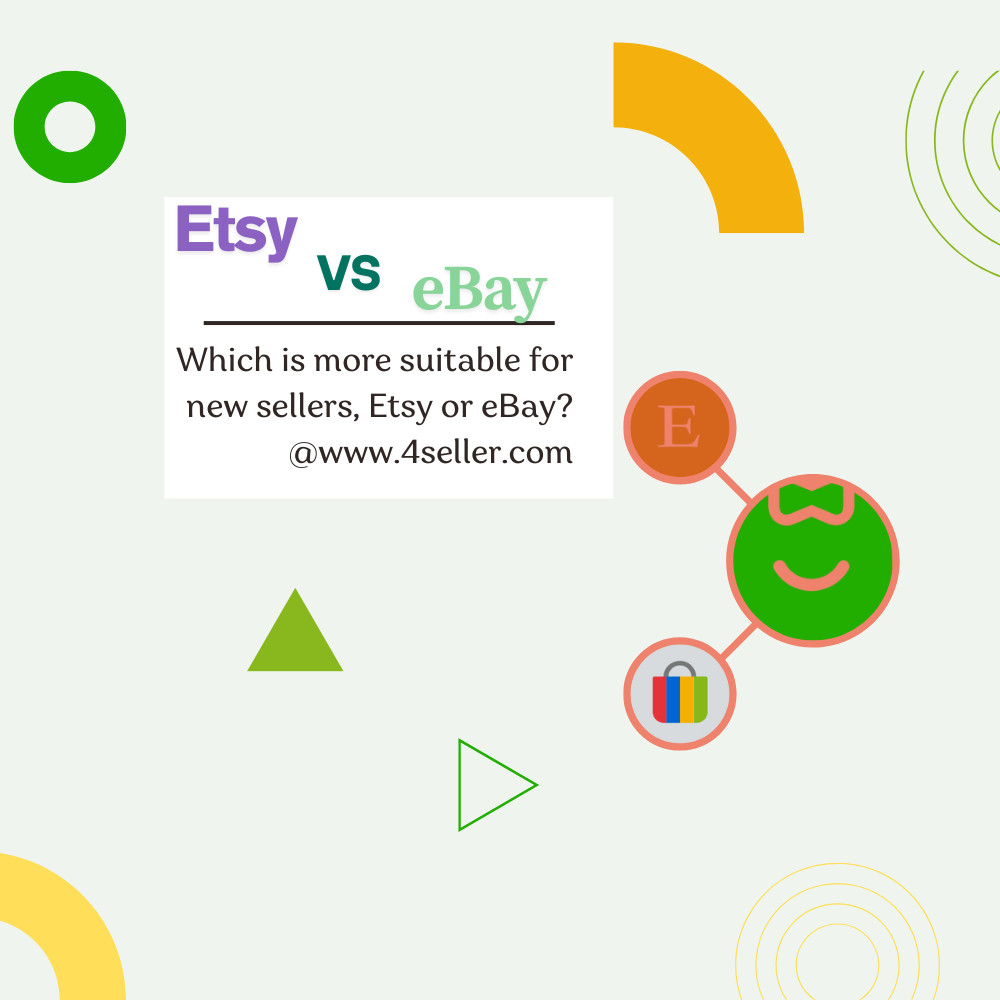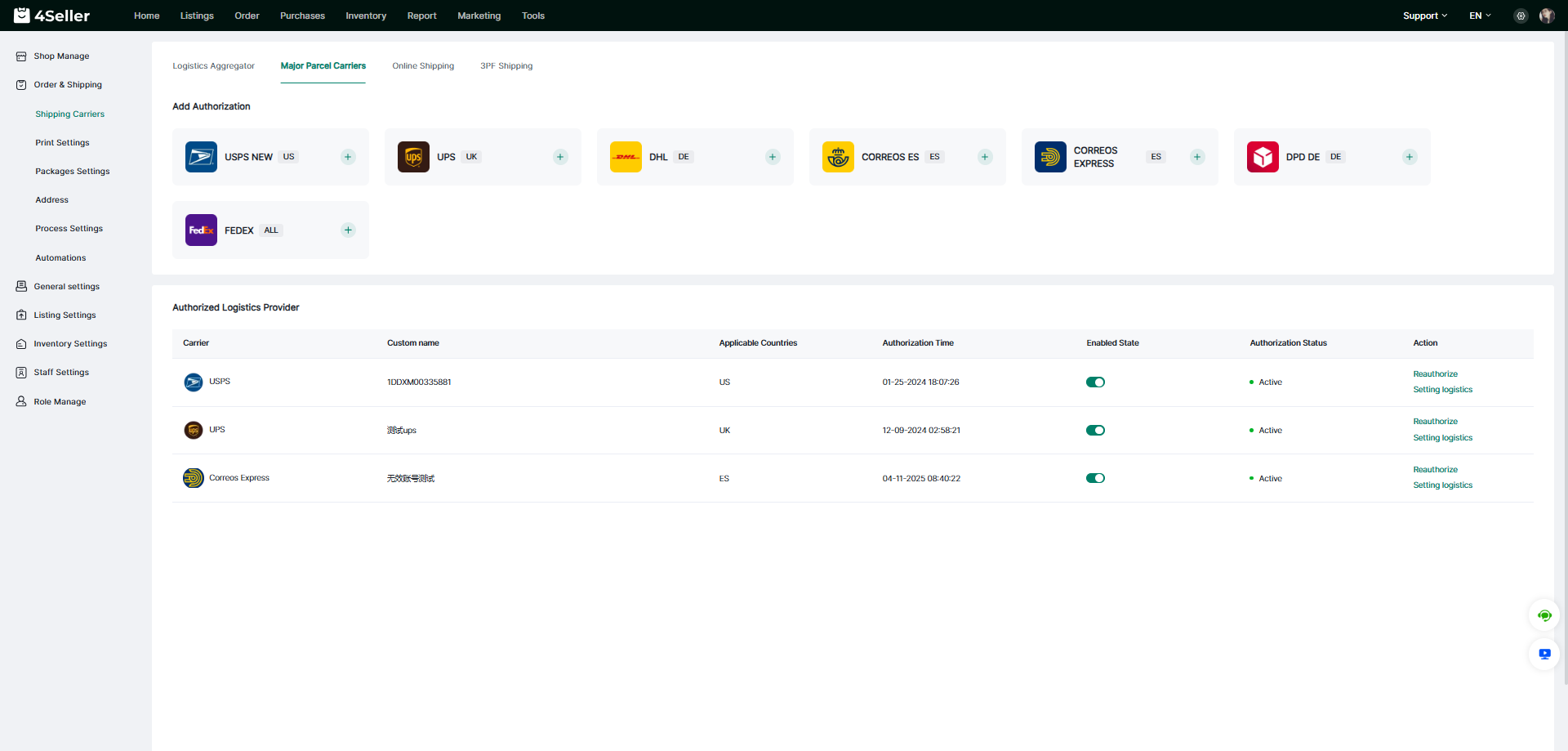 In the e-commerce online store era, new sellers face many choices. One of the most important choices is picking the right sales platform.Etsy and eBay both are popular platforms in e-commerce. Each has its own features and attracts different sellers. For novice sellers, understanding the features of these two platforms in depth can help them make a wise choice that suits their development.
In the e-commerce online store era, new sellers face many choices. One of the most important choices is picking the right sales platform.Etsy and eBay both are popular platforms in e-commerce. Each has its own features and attracts different sellers. For novice sellers, understanding the features of these two platforms in depth can help them make a wise choice that suits their development.
1. Platform Positioning and Audience Analysis
Etsy shop is a great place for creativity and crafts. It focuses on handmade items, unique designs, and vintage goods.Here, buyers are passionate about individuality and uniqueness, seeking treasures that are hard to find elsewhere. Its active buyers number more than 95 million.
This attracts many consumers who seek a better quality of life. They enjoy creative products and have strong buying power and loyalty. For example, shoppers highly favor exquisite handmade jewelry, vintage-style home decorations, and more on Etsy.

In contrast, eBay is like a big online store. It has many types of goods.
You can find electronics, fashion clothing, collectibles, sports equipment, and more. Its global active users reach 159 million.
They include many types of people. Some are consumers looking for good deals. Others are bargain hunters who love finding second-hand items. Buyers visit eBay to find affordable branded products or to search for cheap goods among many options.

2. Cost Structure Comparison
2.1 Etsy Cost Composition
In opening an Etsy store, the cost structure is relatively simple and clear. You must pay a listing fee of 0.2 US dollars for product listing, and you can list the product for 4 months. If someone does not sell the goods, they will charge a renewal fee of 0.2 US dollars each time.
After a successful transaction, the platform will take 6.5% of the product price. This includes shipping and gift wrapping fees. In addition, if you use Etsy's payment processing service, they will charge a certain percentage of payment processing fees.
Opening an Etsy store is free. This helps new sellers avoid financial pressure at the start.
2.2 eBay Cost Analysis
The cost structure of eBay is relatively complex. eBay charges a basic listing fee. They also take a percentage of the transaction fees based on the selling price.
eBay also offers extra services like promotional listings and store subscriptions. These can make your store more competitive, but they come with extra fees. For new sellers, they need to carefully calculate these fees to ensure that they do not have a significant impact on their profits.
3. Ease of Use Experience of the Platform
Etsy is committed to creating a convenient operating environment for sellers. Its interface is user-friendly and the operation process is simple and understandable. After a new seller makes an account, they just need to enter the shop name. They should also upload product images and add detailed descriptions.
The platform will help the seller fill out product information and set shipping fees. It provides step-by-step guidance and useful templates. Etsy gives sellers a manual to help them learn skills for boosting sales. This helps new sellers start quickly.
You can easily create an eBay account. You can also register quickly using your Facebook, Apple, or Google account. Listing products on eBay is also relatively convenient.
Sellers can find fair prices by looking for similar products. They can also import listing information to save time. However, eBay has many online sales features. New sellers may need time to learn and get used to it. There is a learning curve involved.
4. Marketing and Promotion Capabilities
Etsy understands that sellers need help with promotion. They provide clear marketing and advertising guidelines in the seller manual. Etsy also offers both internal and external advertising options for sellers.
The platform works well with social media like Facebook, Twitter, and Pinterest. This makes it easy for sellers to share products with one click, helping them promote their items. For example, sellers can use Etsy's advertising tools to precisely target potential customers, increase product exposure, and convert potential customers into actual orders.
eBay provides sellers with a variety of built-in marketing tools. The promotion manager lets sellers create different promotional activities.
They can offer product discounts and shipping discounts. This helps attract buyers and encourages repeat purchases. eBay's promotion listing feature can help improve product rankings in search results. This allows more potential customers to see the seller's products.
5. Customer Support Strength
Seeking customer support on Etsy is relatively less convenient. When sellers have problems, they first reach out to the help center. The center can solve some common issues. However, for specific and complex problems, it may be hard to give clear and effective solutions.
If you need more help, click the "I still need help" button. Choose the right problem category and contact customer service using the email form.
Currently, we do not support chat or phone communication. However, the Etsy community forum gathers many sellers, and sellers can exchange experiences, share insights, and solve problems together.
eBay is more proactive in customer support. Its help page has an automatic assistant at the bottom that can quickly answer most common questions. If the automatic assistant cannot help, sellers can easily join the queue to talk to a human agent. They can also reach the support team by email. In addition, the eBay community is also active, and sellers can seek help and obtain advice in the community.
6. Comparison of Platform Shipping Methods
Etsy and eBay are two well-known e-commerce platforms that support both individual and small business sellers. However, there are some differences in shipping modes, mainly in platform policies, tool support, and seller freedom. Here are their core differences and characteristics:
6.1. Etsy's Shipping Mode
Independent Shipping Dominance: Sellers take care of order packaging and shipping. The platform does not require them to use certain delivery services. They need to manually upload tracking numbers (for small orders in some countries/regions, this can be exempted).
Sellers can set the processing time to 13 working days or longer, and they must ship the goods within that time. Otherwise, it will affect the store's rating.
Freight setting: Supports custom freight, free freight or calculating freight based on weight/region (please fill in the product weight and size).
You can set differentiated freight for different countries.
Integration tools: Can purchase shipping labels (through Etsy Shipping, supporting USPS, FedEx, etc.), enjoy discounted prices and automatically synchronize tracking information.
International sales: Encourages cross-border transactions. Sellers need to handle tariffs and customs clearance by themselves (can set whether to bear international freight).
6.2. Shipping mode of eBay
Diversified logistics options: Self-fulfillment: Sellers can choose logistics independently (such as USPS, FedEx, UPS, etc.), and upload tracking numbers. eBay has a fulfillment service in some countries. It is similar to Amazon FBA. A third-party warehouse, like OrangeConnex in Australia, manages this service.
Flexible freight setting: Supports calculating freight (based on weight/region), fixed freight or free freight. You can set the "freight discount" to attract buyers to purchase in bulk.
Strict shipping time requirements: Need to ship within the promised time (usually 13 days). Delay may affect the "Top Rated Seller" rating. Provide "Same Day/1Day Handling" option to improve search ranking.
Global distribution plan: Sellers send goods to eBay's warehouses in other countries, like the United States. eBay handles international shipping and fees, making cross-border sales easier.
Return management: Return policies are more standardized. Some categories are mandatory to accept returns. Sellers need to clearly define the rules in advance.
4Seller: One-stop multi-platform order management & Cross-border logistics solution
Easy to connect with Etsy and eBay, manage orders efficiently, intelligently match international logistics, help you ship quickly, and improve store operation efficiency!
Seamless connection of orders on both platforms, no need to switch backends, avoiding omissions. Automatically synchronize order information, real-time update logistics status, and improve buyer satisfaction. Integrate mainstream logistics channels such as USPS, Fedex, DHL, UPS, etc.

How to Connect eBay Store to 4Seller?
How to Connect Etsy Stores with 4Seller?
7. In Conclusion
For new sellers, if the goods they have are unique handicrafts, personalized design products, or items with a retro charm, and the target customers are those who pursue individuality and love creativity, then Etsy is undoubtedly the ideal choice. Its focused market positioning, low entry threshold for opening an account, and strong support for creative products provide fertile soil for the sales and brand building of such goods.
If the new sellers have a wide variety of product types, covering new products, second-hand goods, or electronic products, and expect to reach a broader global customer base, eBay is more advantageous. eBay's powerful marketing tools, comprehensive customer support, and good scalability can help sellers expand in the highly competitive e-commerce market.
Of course, some new sellers with energy and resources may consider trying to open stores on both Etsy and eBay to fully leverage the advantages of both platforms. However, it is necessary to plan the inventory reasonably and allocate operational efforts wisely to ensure that both stores can be properly managed. We hope that new sellers can carefully choose the platform based on their product characteristics and development goals, and embark on a successful e-commerce journey.
 By Amelia14 Apr,2025
By Amelia14 Apr,2025In the e-commerce online store era, new sellers face many choices. One of the most important choices is picking the right sales platform.Etsy and eBay both are popular platforms in e-commerce. Each has its own features and attracts different sellers. For novice sellers, understanding the features of these two platforms in depth can help them make a wise choice that suits their development.






